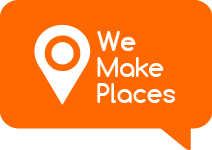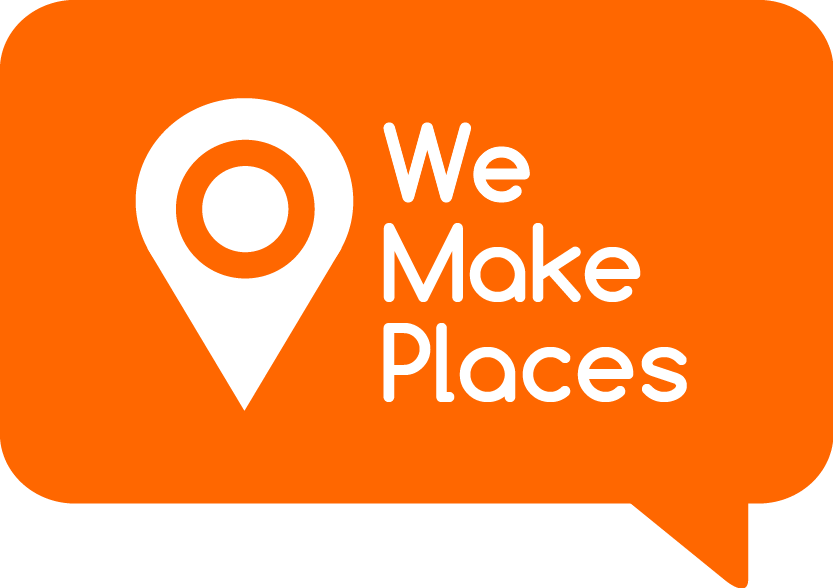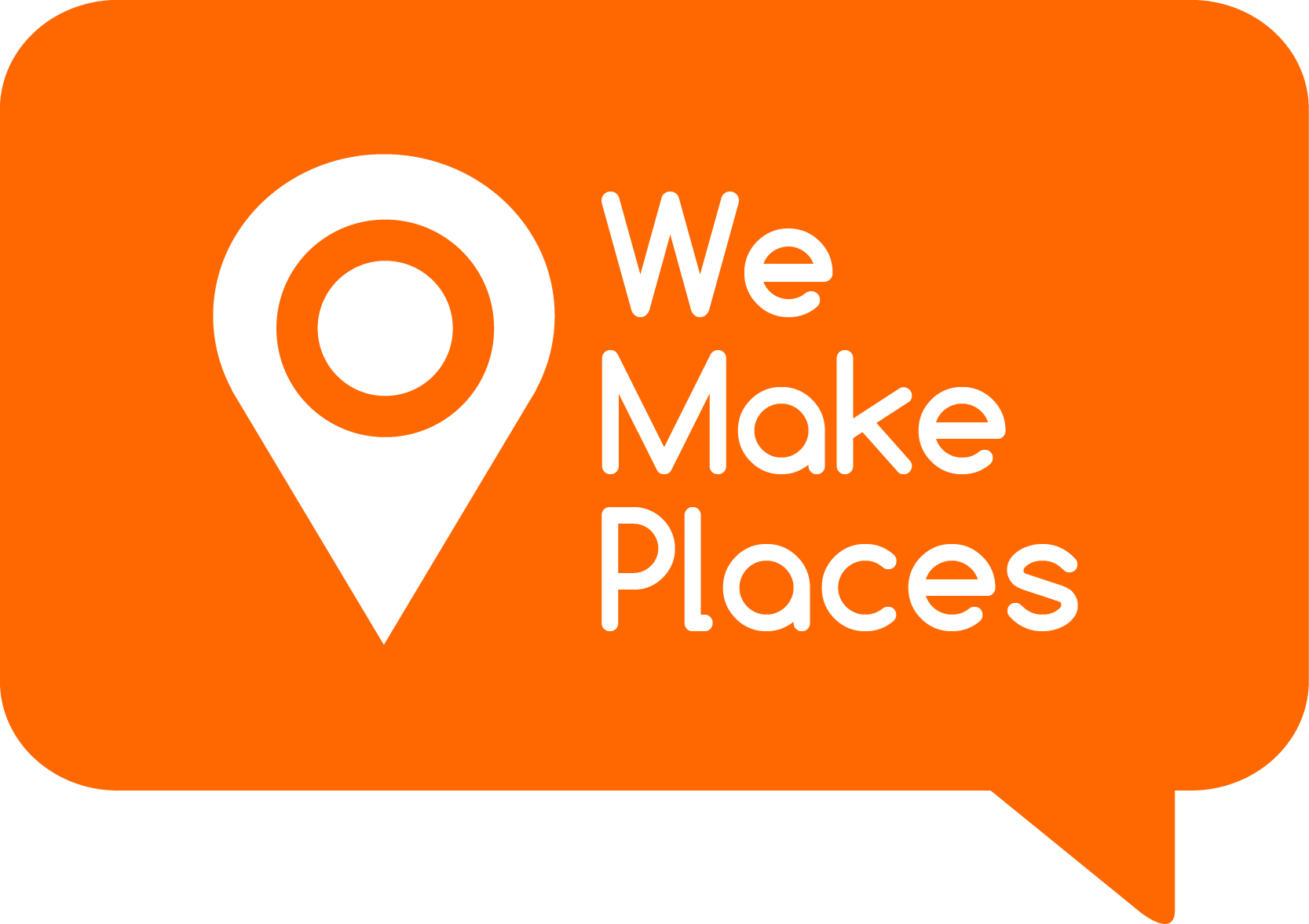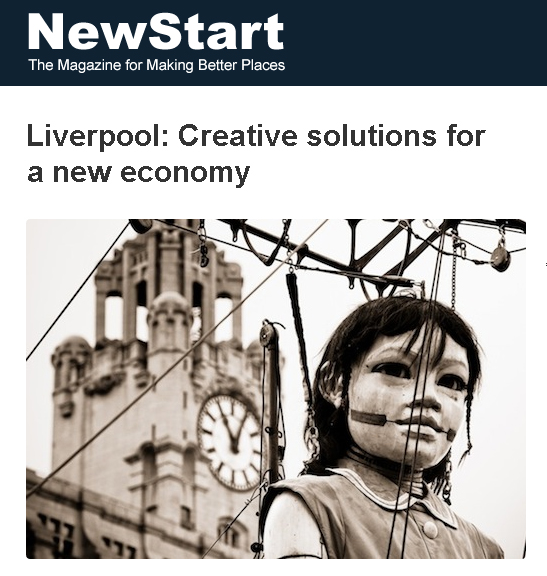New Start Magazine is ‘articulating the alternative’ for places. Writing about a new local economics. Sharing ideas and solutions.
New Start was launched as the UK’s first regeneration magazine in February 1999. Since then it has told the stories of the people and projects creating social and economic change in local areas in the UK and internationally. It has been part of Manchester-based Centre for Local Economic Strategies (Cles) since October 2010.
Between May 2015 and July 2016 New Start visited the 10 core cities of the UK to map local alternative economies, as part of the Friends Provident Foundation’s Building Resilient Economies programme. They recently came to Liverpool and interviewed Toria and Kate from We Make Places as part of their process.
You can read their full Liverpool edition online.
Editor Clare Goff also asked for blog posts from Kate and Toria and here is the one that Kate wrote about her vision for Liverpool as a Collaboratively Creative City:

Richard Florida argues that if cities today wish to rejuvenate themselves, they need to pursue policies that attract creative people. Liverpool has no trouble in attracting, or indeed breeding creatives; our challenge is to harness that creativity as we move forward towards the next definition of our city.
When the creative friends behind We Make Places set about issuing what they called ‘Provocations for a city’, we were focused on dreaming big and delivering differently; we wanted to challenge the usual red tape and systematic approach to regeneration. We didn’t want our vision to be halted by process and we wanted the community to be involved.
We are not living in a era when we have the luxury of vast amounts of time or money to find solutions to our social and spatial problems and we (society) cannot afford to support the services we have come to expect will always be there.
So surely this is the time when community-led projects must be encouraged and allowed to flourish. When creative people and citizens come together they can combine the knowledge of their environment, the economics of their community and their dreams and vision to bring about change; these partnerships can help ordinary people become extraordinary leaders and visionaries.
Inspired by the connections we have made through being part of the European Cultural Foundation Build the City programme we are developing a one day cultural symposium on The Maverick City: an insight into a growing movement of artists, designers and activists delivering grass-roots projects and provocations in communities across Europe.
‘We need to see real collaborations, with cultural entrepreneurs
working alongside council teams on real regeneration challenges’
The city is littered with awesome examples of this type of regeneration – from Princes Park to HomeBaked in Anfield – each created by citizens wanting to help their community and leave a legacy, not by a top down or centrally funded solution.
So how can Liverpool harness the talent and skills of the creative minds that are bringing about change on a micro scale in communities throughout the city region and beyond? There are plenty examples of other cities doing this:
In Boston, through the collaborative Mayor’s Office of New Urban Mechanics, the mayor created The Public Space Invitational which invited designers, artists and engineers to reimagine Boston’s public spaces.
In the first year it cites that ‘designers made a bridge more playful, parks more beautiful and community orientated and the stairs of City Hall ‘more fabulous’. This is about partnerships between council officers and staff with city-based entrepreneurs and creatives to pilot projects that address the needs of the city and its residents. This is civic participation at its best – local solutions created by local people, and it’s no small point that the work is commissioned locally so the money stays in the city’s economy too!
In Sydney the Activate Parramatta programme sets similar ambitions and budgets to involve the local community and local entrepreneurs in sharing and implementing their vision for the city, led by their elected mayor – another real partnership approach.
If the council really believes that, ‘culture is the rocket fuel for the continuing regeneration of Liverpool’, then beyond its events programme and tourism offer, we need to see some real collaborations involving cultural entrepreneurs working alongside council teams on real regeneration challenges. Big businesses involve external creatives in hacks and brainstorms. Imagine the outcome of big cities, our city, doing this!
Across some of the most significant cities worldwide, there is a revolution going on in terms of how cities are designed and built. Liverpool (not unlike a lot of the UK) is very much in danger of being left behind on this one if we do not wake up and strive for the independence and difference that we still market as our own character trait. This needs to be visible in abundance as we design and develop our city for the future.
It is clear from the many recent citizen-led campaigns that people in Liverpool care about the built environment. It is also evident that Liverpool has a huge pool of micro-businesses and individuals working in the built environment and creative sectors. Therefore the opportunity to capture and harness this is immense.
It’s almost ten years since Liverpool was European Capital of Culture. Let’s make the next ten years the time that WE (the people of the city) make Liverpool, because we certainly can’t rely on the historic systems or funding to do it for us.
http://liverpool.newstartmag.co.uk/your-blogs/collaboratively-creative-city/




